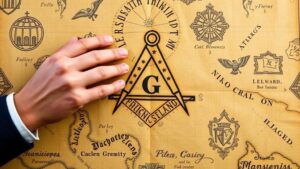Unearthing Currency Notes Hidden in Floorboards of Historic Taverns
Unearthing Currency Notes Hidden in Floorboards of Historic Taverns
Throughout history, taverns have served as vital social hubs, places for food, drink, and a modicum of respite. But, for researchers and hobbyists alike, these establishments can also be treasure troves of forgotten history–most notably in the form of currency notes hidden within their floorboards. This article explores the historical context of currency notes, reasons for their concealment, notable discoveries, and the implications of these findings.
Historical Context of Currency Usage in Taverns
During the 17th to 19th centuries, various forms of currency, including banknotes and coins, circulated throughout Europe and America. Taverns were often places where transactions occurred, whether for lodging, drinks, or food. As a result, many patrons would leave behind small denominations or scrawled notes during their visits, either as tips or as casual exchanges, potentially leading to their deliberate concealment.
Currency hoarding is not unique to recent crises; many taverns experienced financial turmoil during significant historical events, such as the American Revolutionary War or the Great Depression. In these fraught times, temporary concealment of valuables like currency notes became a pragmatic choice.
Reasons for Concealment
There are several motivations behind the practice of hiding currency notes in tavern floorboards:
- Safety: Patrons may have viewed floorboards as a secure place to hide their valuables during times of unrest, conflict, or economic uncertainty.
- Superstition: In some regions, it was believed that hiding coins or notes within the walls or floors of a building would bring good luck, prospering the establishment or the people within it.
- Poverty and Financial Instability: In economically challenging times, individuals often hid their cash to prevent it from being stolen, thus leading to the practice of stashing notes in less conspicuous locations.
Notable Discoveries and Case Studies
Over the years, numerous discoveries of hidden currency notes have been reported in historic taverns across the globe. One fascinating case occurred in a 300-year-old tavern in Massachusetts, where renovations unveiled a trove of banknotes dating back to the early 1800s. These notes were primarily from defunct regional banks, serving as a snapshot of local economic history.
In another notable instance, restorers at a historic inn in England found bundles of 19th-century banknotes tucked into the floorboards during restoration work. The notes were preserved remarkably well, offering insight into the decorative designs of the currency and the socio-economic climate of that era.
Implications of Findings
The act of unearthing hidden currency notes can yield significant implications for both historians and the general public. Here are several broad areas of impact:
- Historical Insight: Each note carries stories and provides context regarding the economy and commercial practices of its time.
- Cultural Heritage: Discoveries often contribute to the understanding of local customs, folklore, and how communities adapted to economic changes.
- Preservation of Artifacts: Such findings create opportunities for historians and museums to preserve and exhibit artifacts that illustrate the economic history of a region.
Real-World Applications
Uncovering hidden currency notes can promote local tourism, encouraging heritage and history enthusiasts to visit and explore preserved taverns and inns. Also, researchers can use this information to enhance public education around economic fluctuations and their impact on community life.
Actionable Takeaways
For those interested in exploring this field further, consider the following actions:
- Participate in local heritage groups or archeological societies that focus on historical preservation.
- Visit renovated historic taverns and tavern museums to gain firsthand insights into local histories.
- Engage with historians or academics specializing in economic history to understand more about historical currency practices.
To wrap up, unearthing currency notes from the hidden floorboards of historic taverns offers a unique blend of financial history, cultural storytelling, and the enchantment of archaeology. These hidden treasures bring the past to life and provide opportunities for broader engagement with history and heritage.

